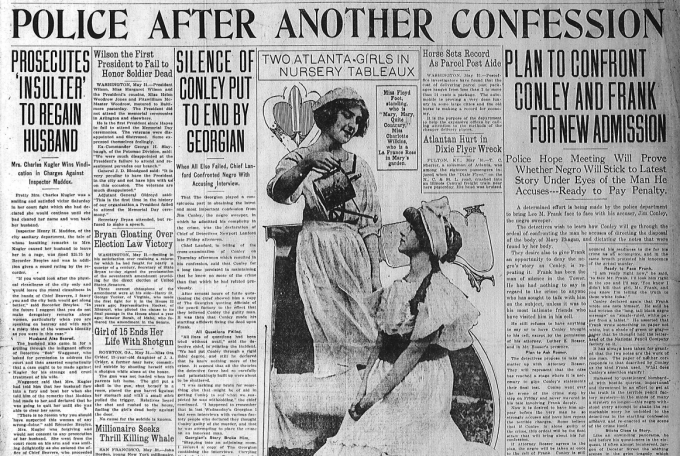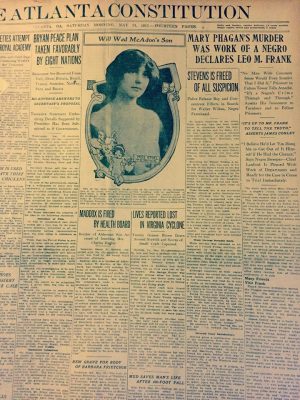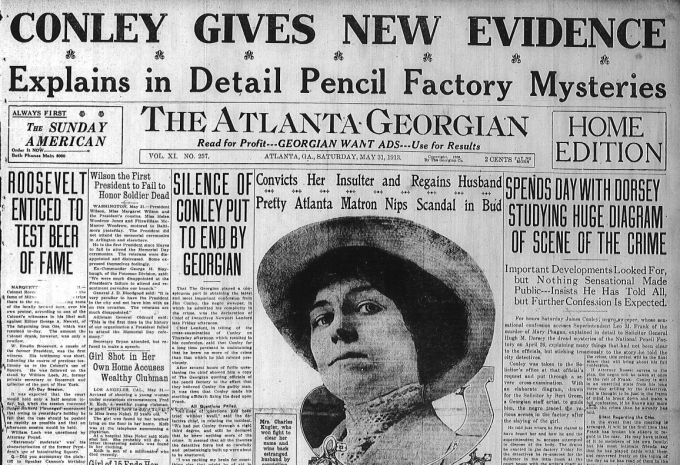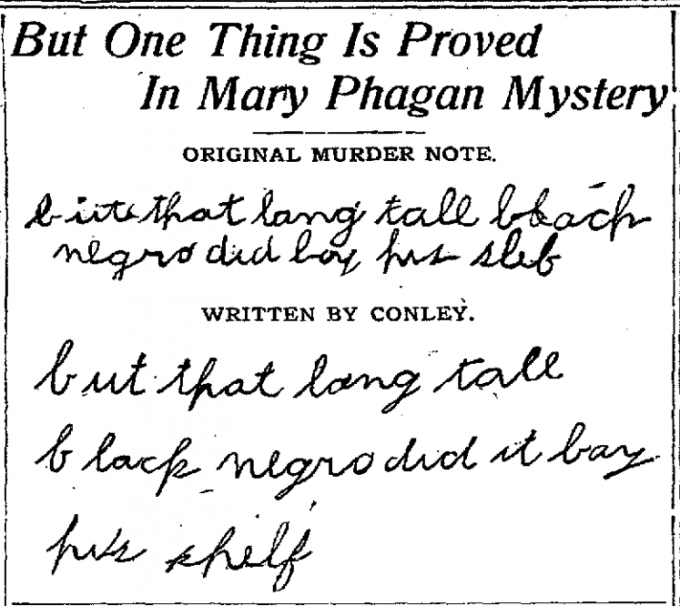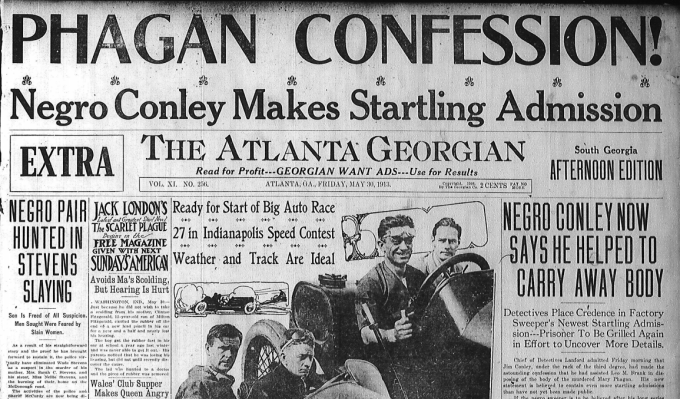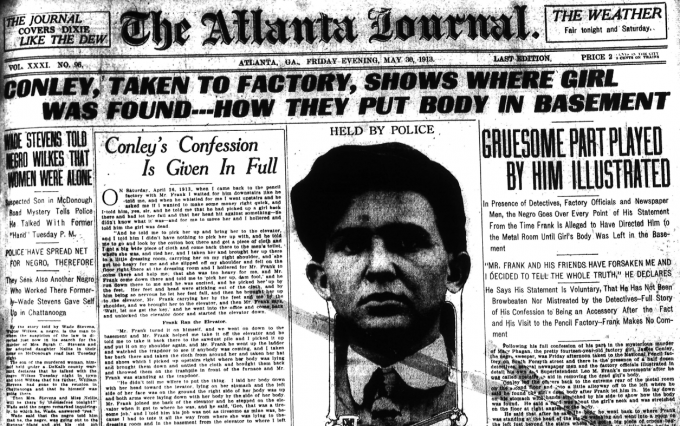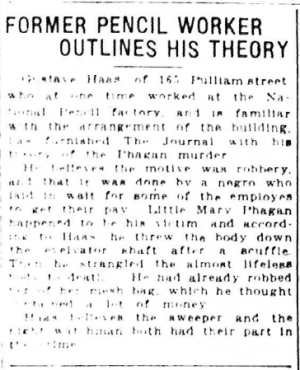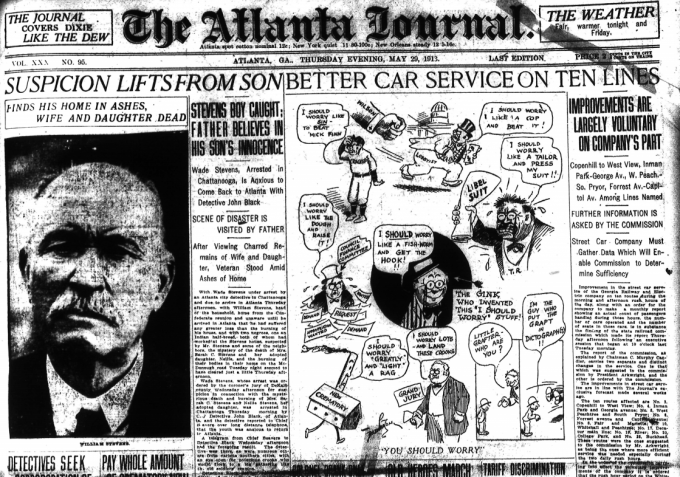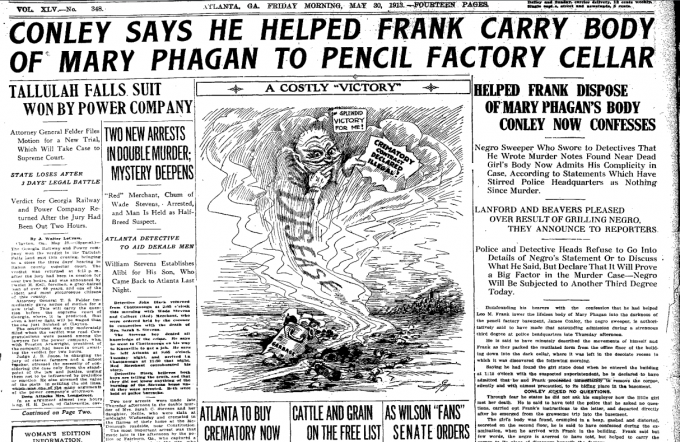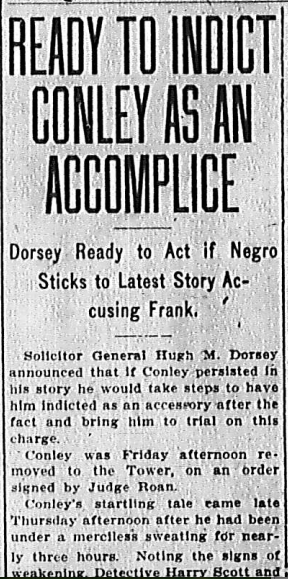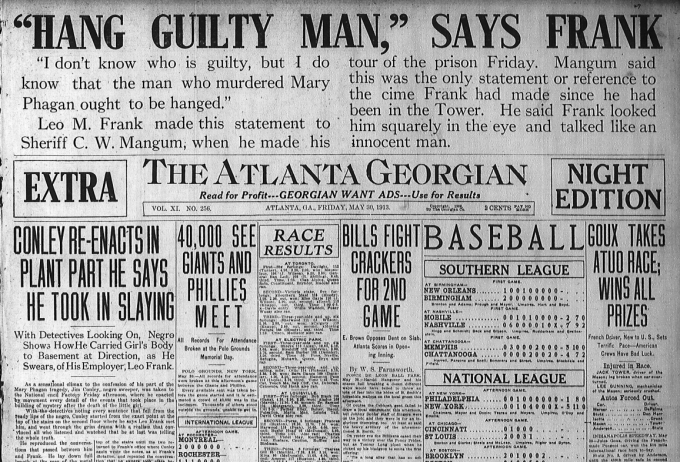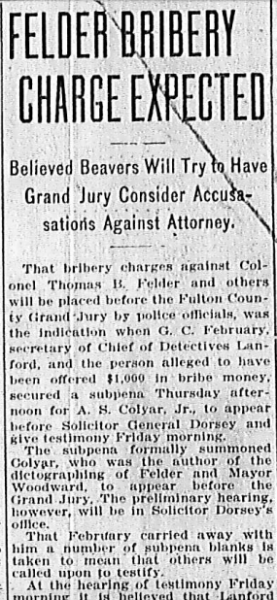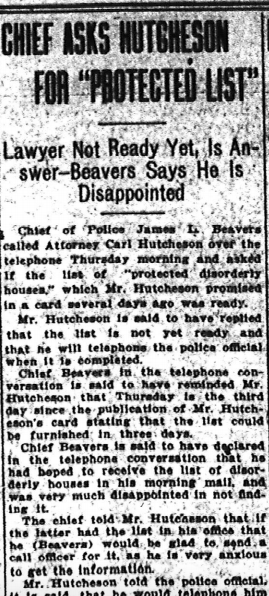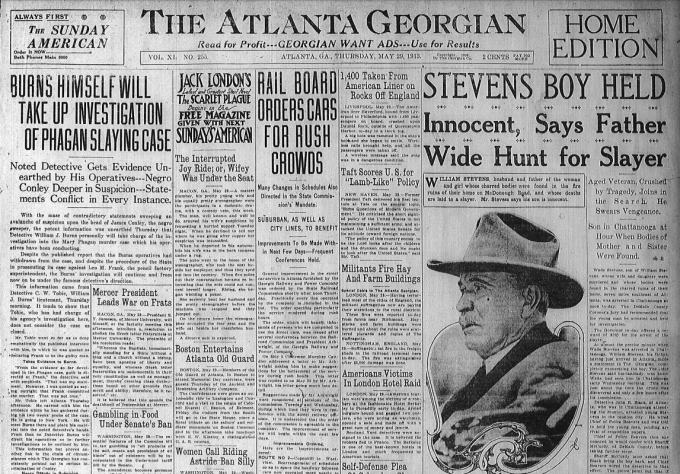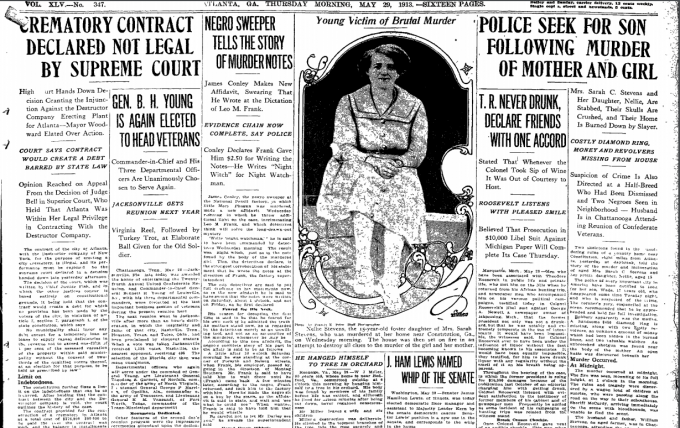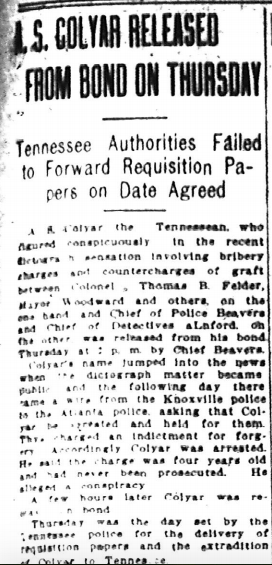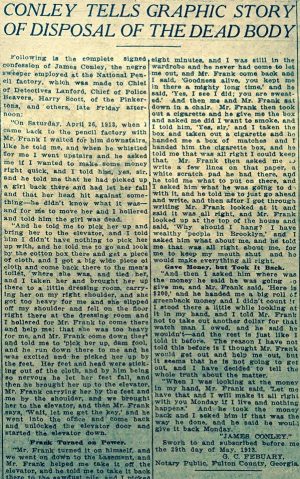 Another in our series of new transcriptions of contemporary articles on the Leo Frank case.
Another in our series of new transcriptions of contemporary articles on the Leo Frank case.
Atlanta Constitution
Saturday, May 31st, 1913
Following is the complete signed confession of James Conley, the negro sweeper employed at the National Pencil factory, which was made to Chief of Detectives Lanford, Chief of Police Beavers, Harry Scott, of the Pinkertons, and others, late Friday afternoon:
“On Saturday, April 26, 1913, when I came back to the pencil factory with Mr. Frank I waited for him downstairs, like he told me, and when he whistled for me I went upstairs and he asked me if I wanted to make some money right quick, and I told him, yes, sir, and he told me that he had picked up a girl back there and had let her fall and that her head hit against something—he didn’t know what it was—and for me to move her and I hollered and told him the girl was dead.
“And he told me to pick her up and bring her to the elevator, and I told him I didn’t have nothing to pick her up with, and he told me to go and look by the cotton box there and get a piece of cloth, and I got a big wide piece of cloth and come back there to the men’s toilet, where she was, and tied her, and I taken her and brought her up there to a little dressing room, carrying her on my right shoulder, and she got too heavy for me and she slipped off my shoulder and fell on the floor right there at the dressing room and I hollered for Mr. Frank to come there and help me; that she was too heavy for me, and Mr. Frank come down there and told me to ‘pick her up, dam fool,’ and he run down there to me and he was excited and he picked her up by the feet. Her feet and head were sticking out of the cloth, and by him being so nervous he let her feet fall, and then he brought her up to the elevator, Mr. Frank carrying her by the feet and me by the shoulder, and we brought her to the elevator, and then Mr. Frank says, ‘Wait, let me get the key,’ and he went into the office and come back and unlocked the elevator door and started the elevator down. Continue Reading →


